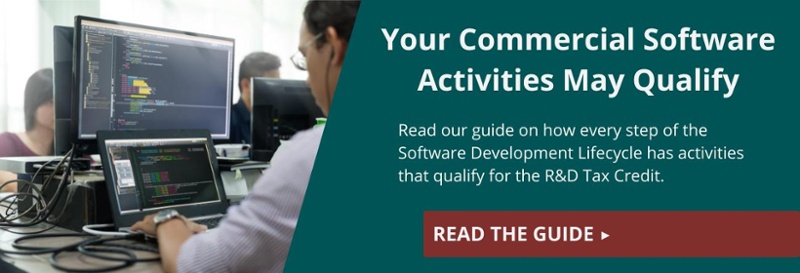 If you thought your company’s software development initiatives weren’t eligible for the Research and Development (R&D) Tax Credit, think again.
If you thought your company’s software development initiatives weren’t eligible for the Research and Development (R&D) Tax Credit, think again.
In October 2016, the U.S Department of the Treasury released new regulations providing more clarity on the definition of Internal Use Software (IUS). As a result, companies learned that more of their software development initiatives were eligible for the R&D Tax Credit. And they weren’t just commercial software vendors, either. Companies from a variety of industries took advantage of the new regulations.
If you’re creating or improving software systems to support your business, you may be eligible. Here’s what you need to know.
General and administrative functions that may qualify
Before disqualifying yourself because your company doesn’t create software as its sole purpose, check the qualifying functions below:
- Financial management functions of the taxpayer and the supporting recordkeeping.
- Human resource management functions that manage the taxpayer’s workforce.
- Support services functions that support the day-to-day operations of the taxpayer.
The 3-Part High Threshold of Innovation Test
Now that you’ve identified an area that can be considered as IUS, you need to not only pass the Four-Part Test but the 3-Part High Threshold of Innovation Test, too. The Four-Part Test helps companies determine if their research and development activities qualify for a tax credit. The four parts include elimination of uncertainty, process of experimentation, technological in nature, and qualified purpose. The 3-Part High Threshold of Innovation Test regulations are:
- The software results in cost reduction, improved speed or other measurable improvement that is substantial and economically significant.
- The software development process involves significant economic risk. This means that the taxpayer commits substantial resources to the development and there is uncertainty due to technical risk that the resources would not be recovered within a reasonable period of time.
- The software is not available to be purchased, leased, or licensed in the commercial market and is used for the intended purpose without modifications required to satisfy the innovation and significant economic risk requirements above.
These regulations are designed to encourage companies in all industries to continue to invest in “software innovation” that allows them to compete more effectively on a global basis.
Not sure where to start? Still have questions? We are here to help.





